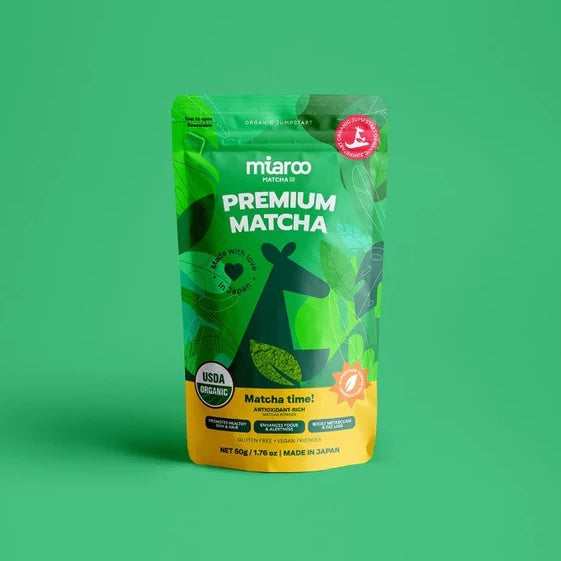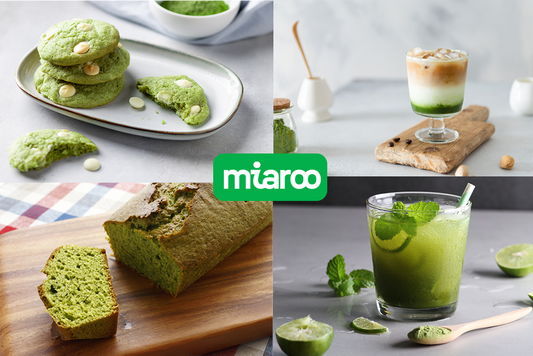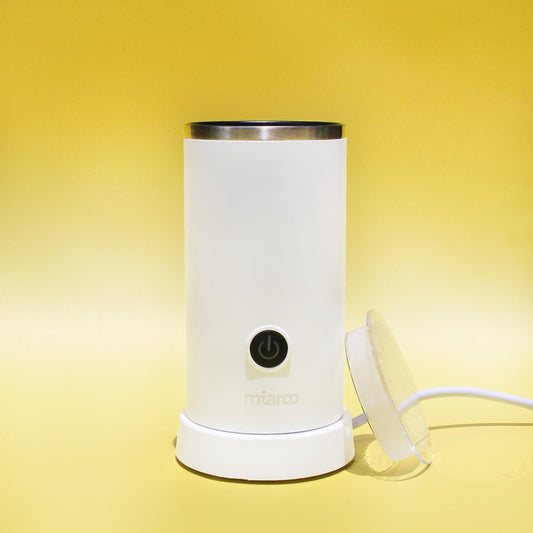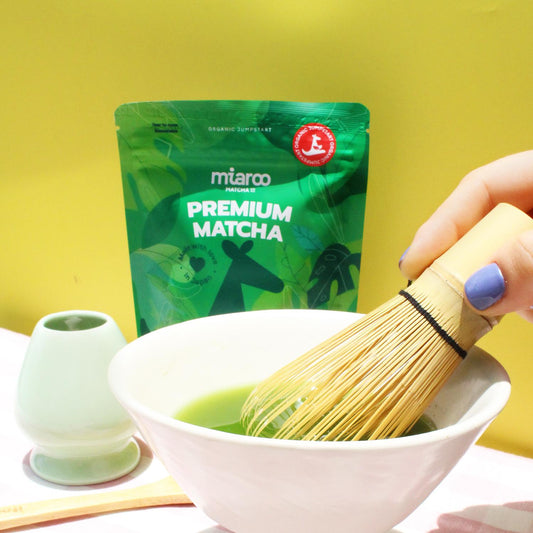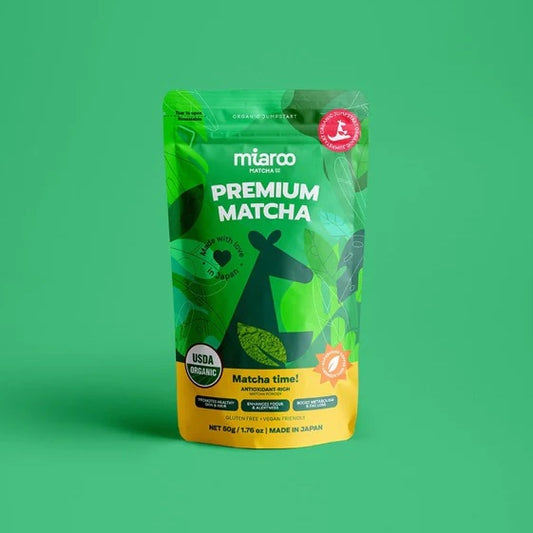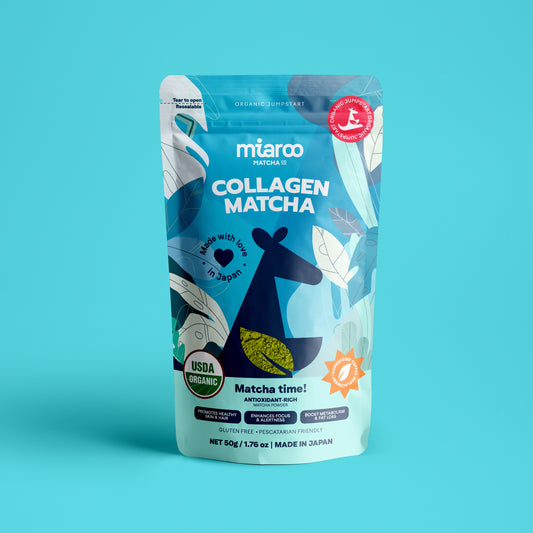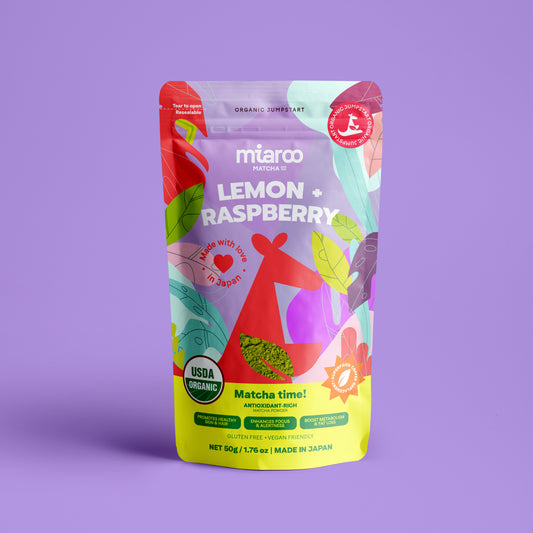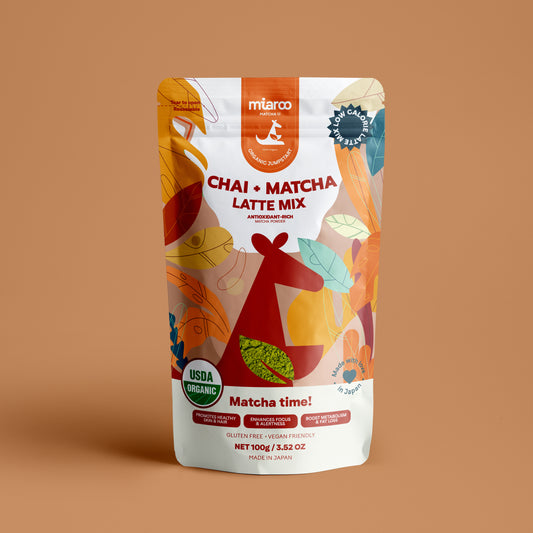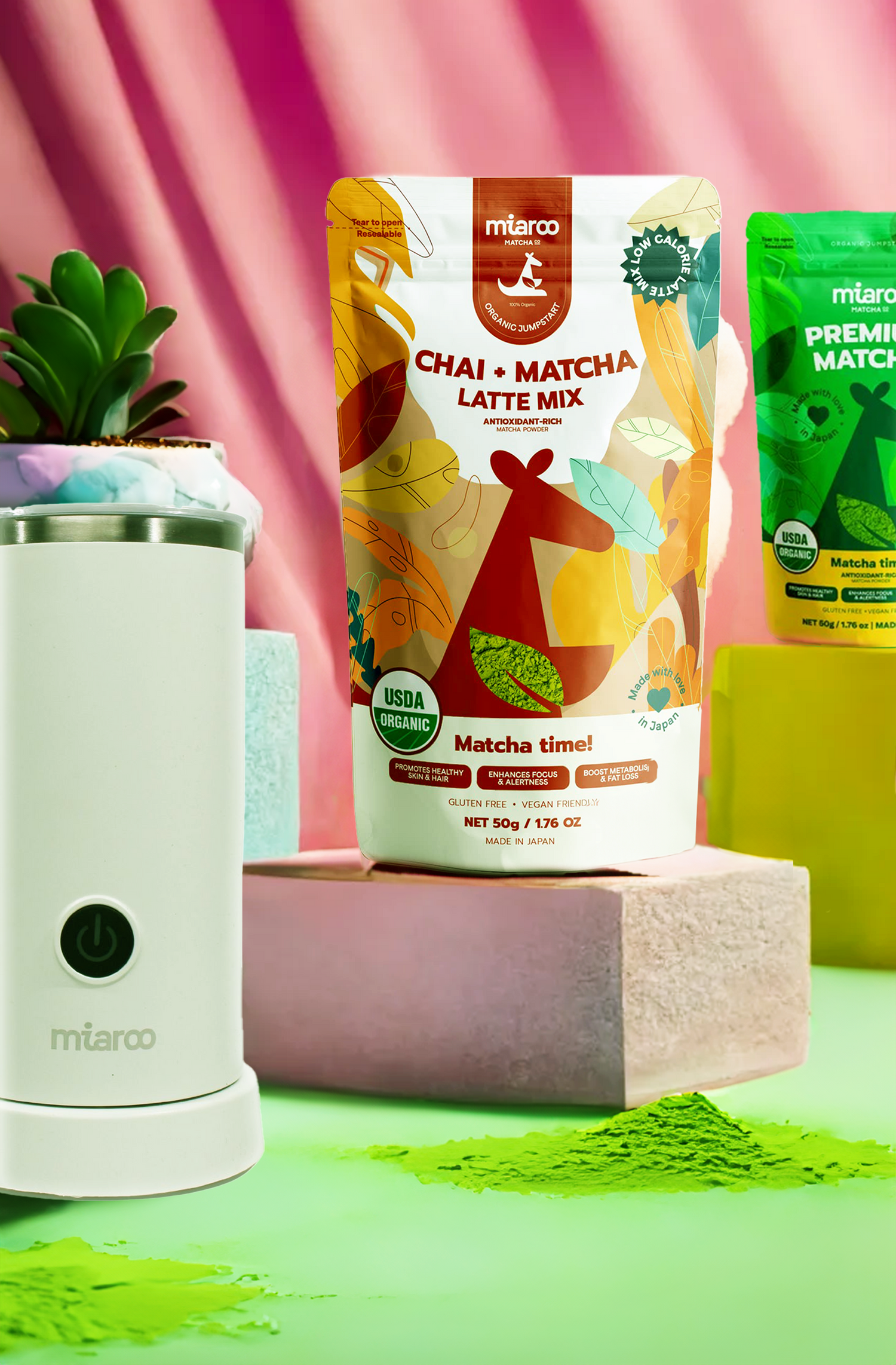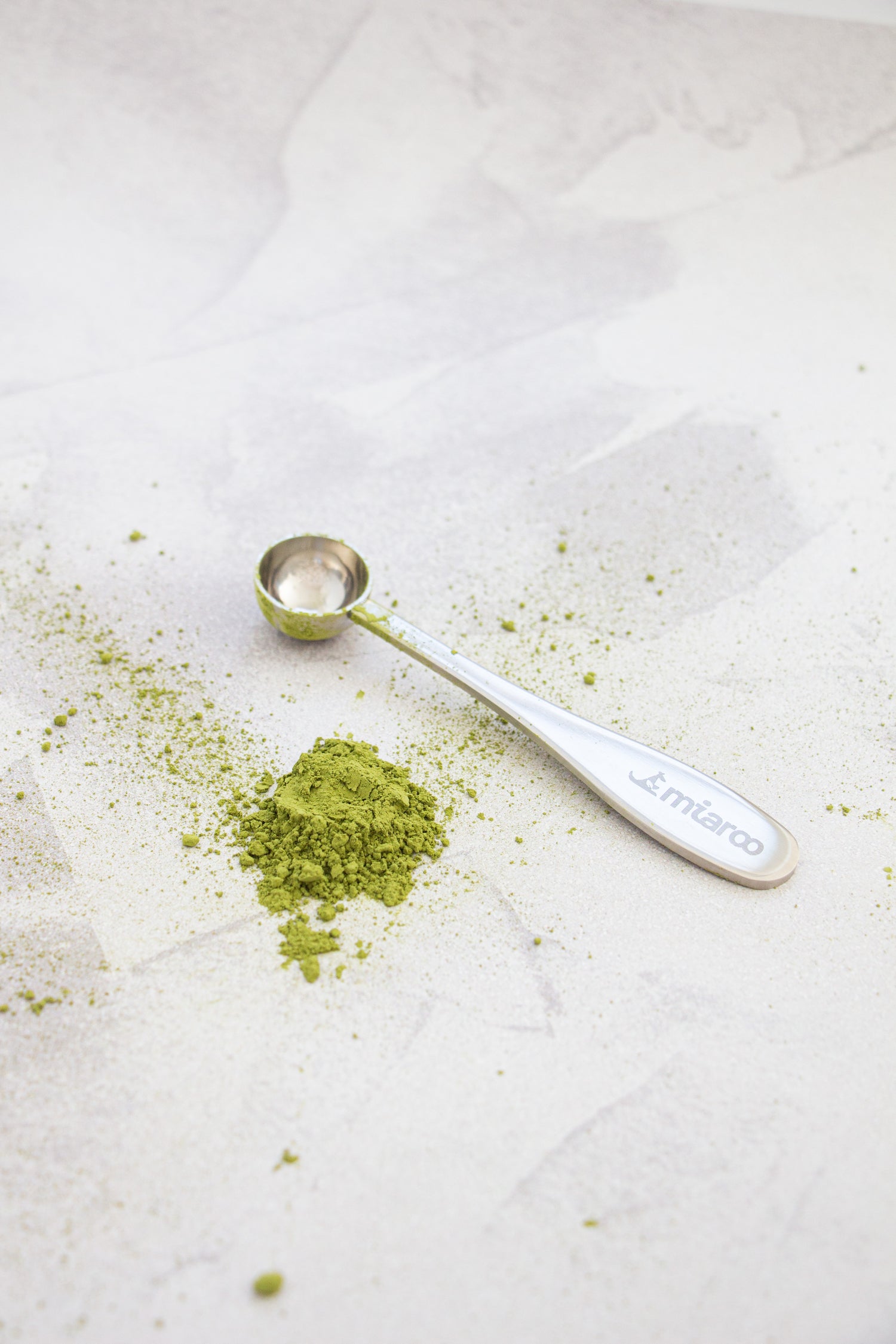Matcha is a magical and delicious drink - and knowing how to determine the quality and grade to use can make the difference between an incredible drinking experience and a disappointing one.
Matcha is a finely ground, bright emerald-green tea powder. It is prepared from a high-quality shade-grown leaf known as Tencha, with the scientific name Camellia Sinensis. The tea bushes are sheltered to avoid exposure to direct sunlight, which reduces the pace of photosynthesis and slows down the growth of plants. This provides the leaves with a darker shade of green and stimulates the production of chlorophyll and amino acids.
To help explain what affects quality and what grade to buy, we have compiled the facts you need to know before making a purchase.
The Unique Attributes of Matcha
Regular green teas are prepared by infusion. Dried leaves are steeped in water for some time, and the tea is consumed in the form of a brew. Thus, most nutritious elements remain at the bottom of the mug, with the soaked leaves.
On the other hand, Matcha is made of powdered green tea leaves. As such, every cup of Matcha contains the whole leaf. This results in an incredible flavor, higher levels of antioxidants, the absorption of all of the amazing nutritional elements, and a stronger kick of caffeine. Matcha's effect is several times more potent than traditional leaf teas. It's no wonder so many people have developed a love for it!
The powdered tea is rich in antioxidants, anti-carcinogenic polyphenols, chlorophyll, and amino acids. Matcha can be consumed as a tea or used in cooking, for example Matcha brownies or delicious morning smoothies. Among the many health benefits are:
- Stimulating metabolism & detoxification
- Improving concentration and energy levels
- Reducing the risk of cancerous mutations
- Promoting weight loss
- Lowering cholesterol level and blood pressure.
Determining the quality of Matcha depends on five factors
Matcha is a unique product, and it requires some extra knowledge to understand how to evaluate it. The process that produces Matcha is very complex, involving a combination of ancient tradition and modern technology.
There are five significant indicators of the quality of Matcha.
- origin
- color
- taste
- structure
- grade
The Origin of Matcha
The best matcha powder comes from Japan, where it has been grown for centuries by Zen Buddhist monks who used it to drink during meditation. The Japanese have a strong tradition of growing green tea and drinking it after every meal as a digestive aid.
We source all of our Matcha directly from a family-owned green tea farm in Uji, Kyoto. For 300 years, the highest quality of organic matcha has been produced here, with a tremendous amount of care and love for the product.
The Color of Matcha
The color of powdered organic Matcha tea is the most visible indicator of its quality: the brighter and more intense the color, the better the quality of the powder!
The range of color goes from bright green to deep emerald, depending upon two main characteristics. The first is the tenderness of the leaves: the more tender they are, the greener their shade. The second is chlorophyll content, which tends to be higher in leaves protected from sunlight.
The best matcha tea is made from leaves shielded by misty air or even shades and located at high elevations where only a tiny amount of light penetrates to the ground. Shading the green tea plants stimulates an increase in chlorophyll levels in the leaves. It produces a very mellow, rich green tea character. Of all teas, Matcha has the highest chlorophyll concentration (and therefore green pigment) because it grows at high elevations with little exposure to sunlight.
The Taste of Matcha
As we already know, the highest quality Matchas are carefully tended to by their farmers and shaded well from the intrusive sun.
Growing up in the shade leads to a higher chlorophyll concentration in those delicate leaves, plus an increase in Amino acids and alkaloid caffeine levels. Both factors help to remove any degree of bitterness from the final product, making the tea sweeter, full of taste, and delightful to drink.
The Structure of Matcha
Once the leaves are harvested, the leaves are briefly steamed and dried. While most other Japanese teas then get the full leave rolled, Matcha leaves will be de-stemmed so that only the pure leaves are left, air-dried, and then grind to a powder.
The resulting texture is another main factor in determining the quality of the matcha tea powder.
Perfectly ground Matcha powder will never have any lumps or larger pieces left - it should be smooth and delicate. This allows the powder to dissolve more easily and quickly in water, also leading to an even more enjoyable experience when drinking it.
The Grades of Matcha
Matcha powder is smooth and lends itself well to various formats. Using different grades of Matcha (or grinds) will help you get the best result for your cup. The grades of matcha powder are usually divided into three divisions: Ceremonial Grade, Premium Grade, and Culinary Grade. Let's take an in-depth look at the three levels of Green Tea Powder to help answer those questions.
"Ceremonial" grade is the highest quality matcha you can buy and is used by traditional Japanese tea ceremonies because of its high-quality taste and color. It is bright green in color, has a mellow flavor, and is typically very fine. The higher the grade, the more soluble the Matcha will be, so you can use less water for it to dissolve well. The taste of ceremonial grade matcha is also sweeter than other lower grades. It has a strong umami flavor and can also be used in milk-based recipes.
"Premium" is a lighter grade of Matcha that can be enjoyed straight up as a tea or used in sweets. The sweetness comes out when you add liquid to it. The color is lighter than culinary and is bright green.
"Culinary" grade is perfect for adding to baked goods and other recipes, like Matcha Lattes and smoothies. It has pleasant earthy notes and is not as sweet as the "Premium" grade. However, it is still very high in antioxidants and has all of the health benefits associated with Matcha.
All our Matchas are a reserve blend of Ceremonial and Premium Grade Matcha. This gives you the best of both worlds: the superior flavor of Ceremonial grade Matcha at the best value!
As you have seen, Matcha is not just a green tea powder. Many factors determine the quality. It's an entire drinking experience with the added value of enhanced wellness and health. The perfect feel-good drink!
